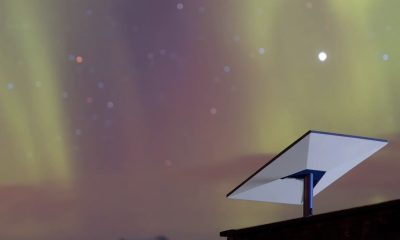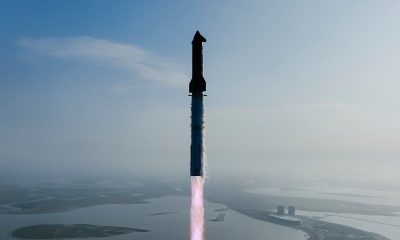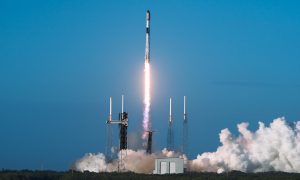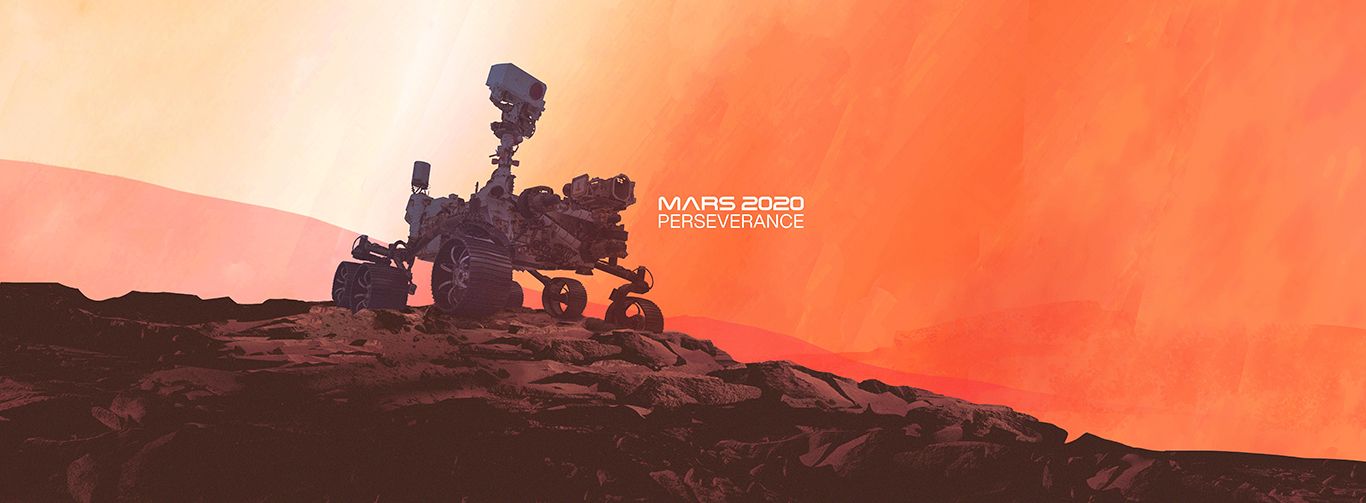

News
NASA set for upcoming Mars mission to seek signs of ancient life on the red planet
Just three weeks ahead of liftoff, NASA and launch provider United Launch Alliance (ULA) announced that NASA’s Mars 2020 rover, Perseverance, and its Martian helicopter sidekick, Ingenuity, were mated with the Atlas V 541 rocket that will kick off the seven-month journey to the Red Planet. The precious cargo encapsulated inside of a protective payload fairing was carefully hoisted by crane operators to rest atop the Atlas V rocket. The payload joins the Atlas V common core booster, four solid rocket boosters, and the Centaur upper stage to achieve the stack’s final flight configuration height of 197 feet (60 meters).
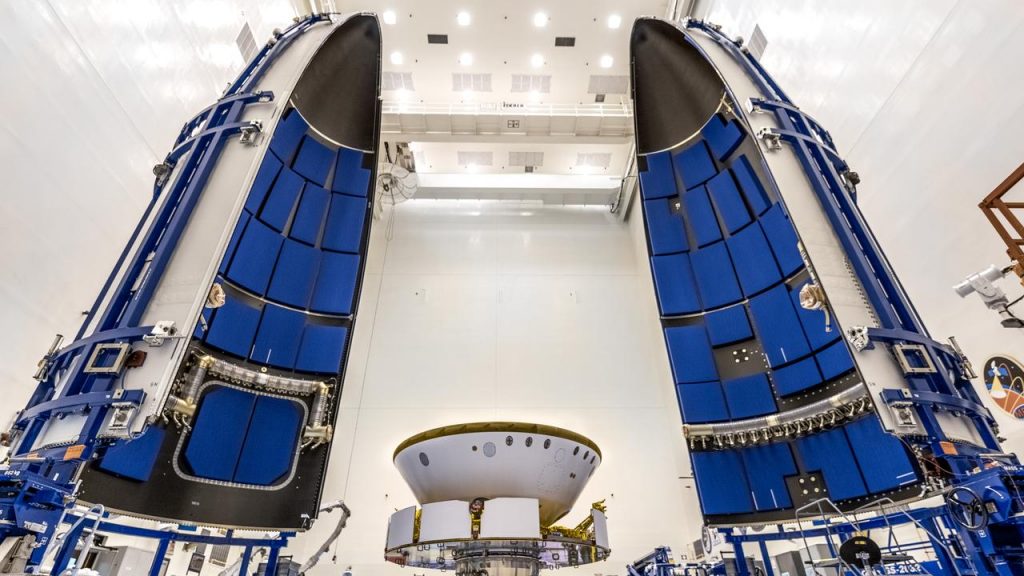
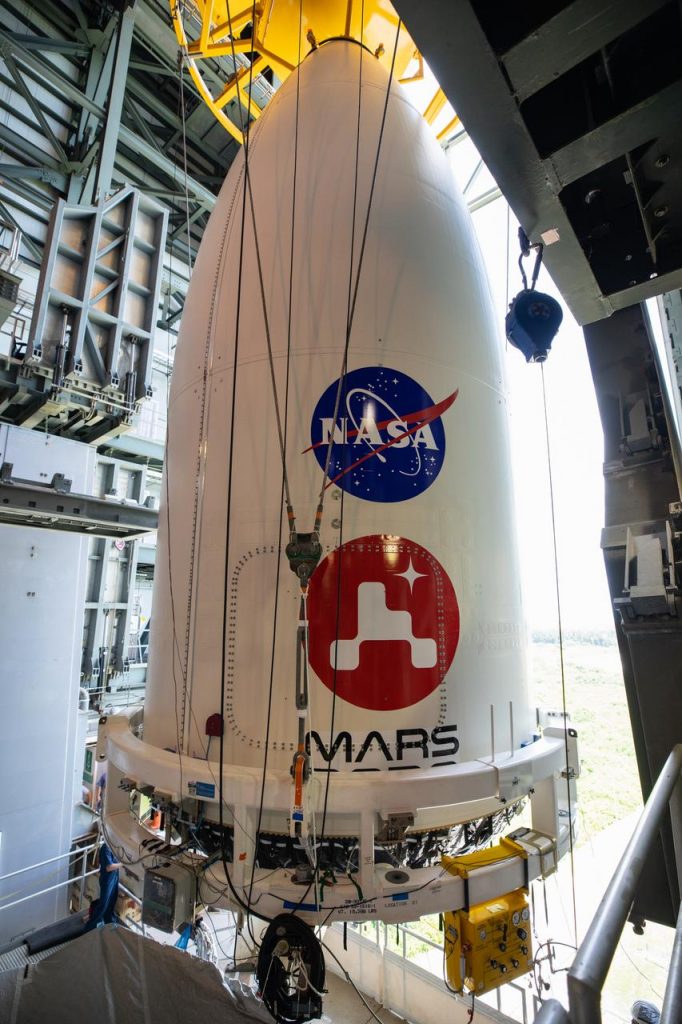
The United Launch Alliance (ULA) payload fairing with NASA’s Mars 2020 Perseverance rover secured inside is positioned on top of the ULA Atlas V rocket inside the Vertical Integration Facility (VIF) at Space Launch Complex 41 at Cape Canaveral Air Force Station in Florida on July 7, 2020. (Image Credit: NASA/Kim Shiflett)
The final stacking procedure was completed inside of the Vertical Integration Facility (VIF) at Cape Canaveral Air Force Station’s Space Launch Complex 41 (SLC-41). The rocket and payload will remain inside the protective structure and complete final check out tests until it is time quite literally roll to the launchpad. Crane operators first set down the payload for a soft touch to begin final full physical and electrical connection. The spacecraft and rocket will undergo integrated electrical testing as well as a battery of other tests as separate spacecraft and simultaneously as one complete unit.
On Friday (July 10), ULA president and chief executive officer, Tory Bruno, stated on Twitter that the Integrated Systems Test (IST) had been completed successfully. According to a previous mission statement posted to the ULA blog site, the IST is a typical pre-launch run down of the various connected systems between the spacecraft and launch vehicle to “verify proper functionality of launch vehicle systems, (and) conduct a simulated countdown and run through the launch sequence.”
The launch vehicle and integrated payload will remain inside the VIF undergoing mission-specific activities and final system checkouts over the next two weeks. Once all pre-flight activities have been successfully completed, approximately two days ahead of the scheduled launch attempt, the entire stack located on top of the Mobile Launch Platform will make the 1,800ft (550 meters) trip to the SLC-41 launchpad which will take about forty-minutes on a modified railway.
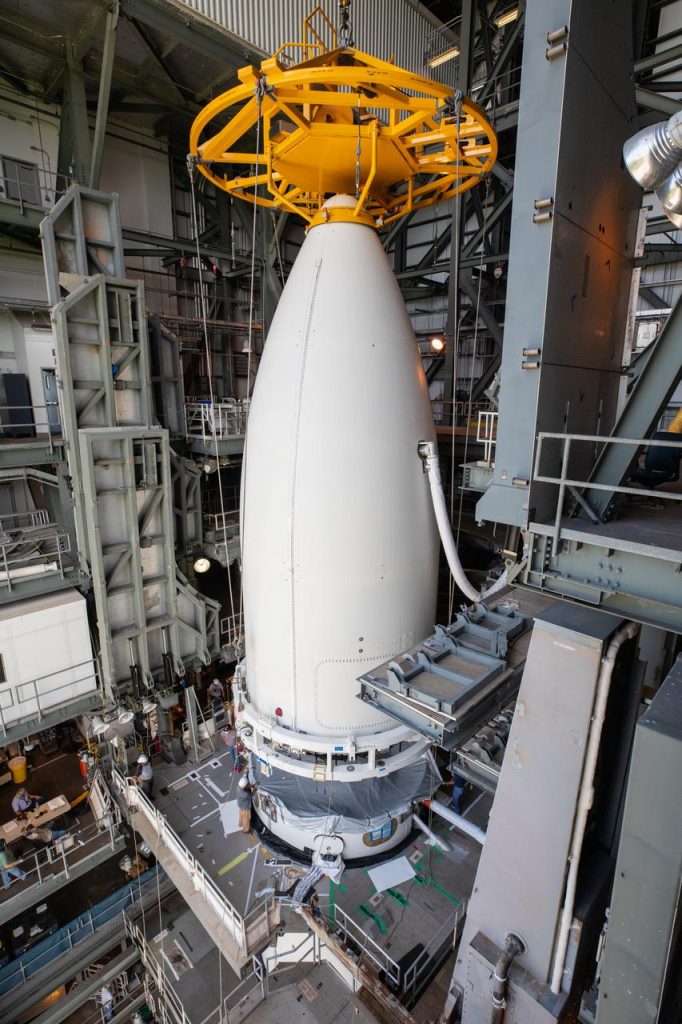
Known as an astrobiology mission and outfitted with seven instruments, the Perseverance rover will conduct new science, sample collection, and test new technology in search of ancient microbial life on the distant planet. The rover will spend the length of one Martian year – two Earth years – exploring the region around its landing site. It will collect and cache samples of the Martian surface to possibly be collected and returned to Earth by future joint missions currently under consideration by NASA and the European Space Agency.
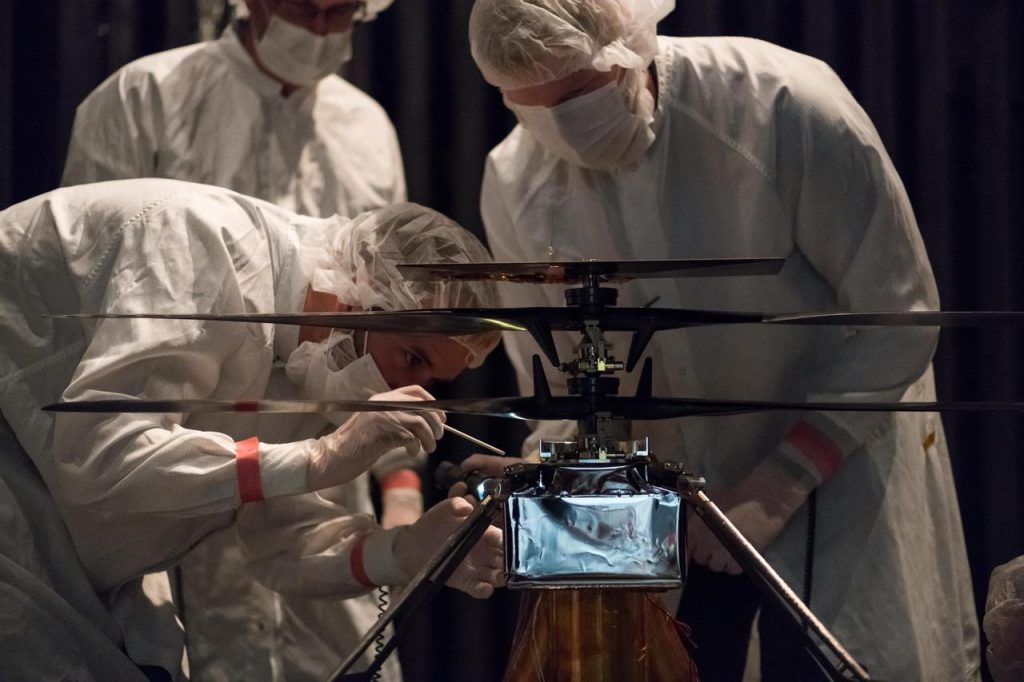
The first interplanetary helicopter, Ingenuity, is a small 4-pound (1.8 kilograms) autonomous solar-powered aircraft that will conduct a series of experimental test flights. Ingenuity is traveling to Mars solely for a demonstrative mission and is not connected to the Perseverance rover by any means other than hitching a ride to the Red Planet. The new technology will demonstrate an ability to create lift in the thin atmosphere and lower gravity environment of Mars to help inform future aerial exploration and science delivery missions.
Currently, NASA and ULA are targeting the launch of the interplanetary mission on July 30th at 7:50 am EDT/4:50 PDT. Should they be necessary, multiple backup launch opportunities are available until the close of the interplanetary launch window on August 15th. Regardless of the launch date, after a seven-month-long, 290 million mile (467 million kilometers) journey – the rover and helicopter will arrive at Mars’s Jezero Crater, the home to an ancient Martian river delta, for a landing attempt on February 18, 2021. The landing date is perhaps even more crucial than the launch date as mission planners must take into account landing site lighting and temperature conditions and the locations of Mars-orbiting satellites required to relay crucial mission-specific information back to Earth.
Should the launch have to abort, and the 2020 window is missed completely, the robots will have to wait until 2022 when Earth’s orbit lines up just right with that of Mars, and the next interplanetary launch window opens up.
News
Tesla opens massive solar Supercharger station in California
The Supercharger opened to customers ahead of Fourth of July weekend, while Tesla continues phase two of construction on the site.
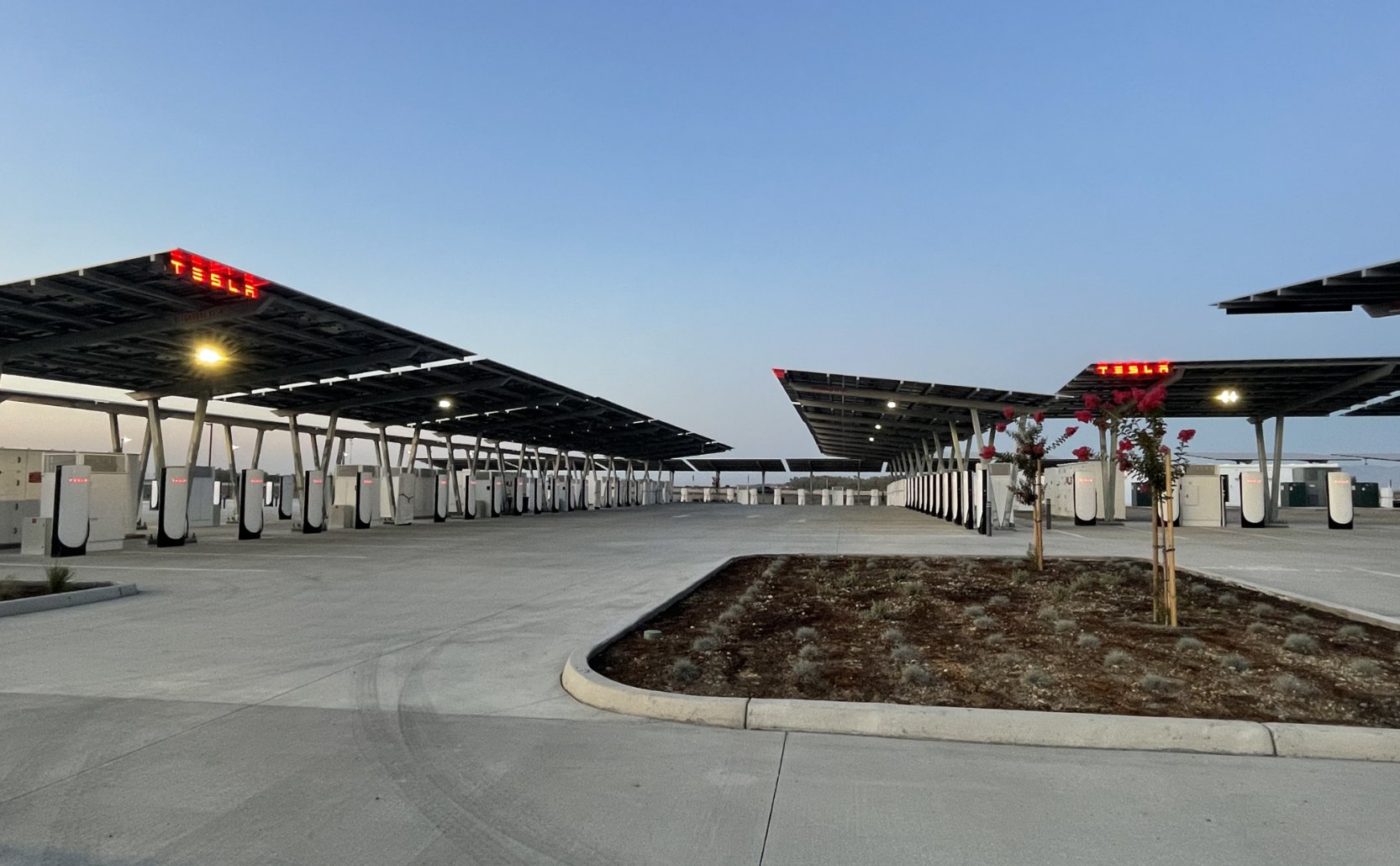
Tesla has officially launched the first several Supercharging posts at a massive station in California, notably including solar canopies and grid-scale batteries to offer completely renewable charging.
Last week, Tesla announced on X that it opened the first 84 Supercharger stalls of a planned 168-stall station in Lost Hills, California. Additionally, the massive Supercharger project features 11MW of solar canopies and 10 Megapack batteries for off-grid charging powered entirely by solar energy.
Tesla completed the first phase of the project just days ahead of the busy Fourth of July holiday weekend, adding that initial construction took just eight months. In addition to the remaining charging stalls, Tesla says it’s building a set of lounge areas, renderings of which can be seen below alongside current photos of the site.
Notably, the site also includes V4 charging posts for the company’s latest available charging speeds, and it’s located near the busy junction between I-5 and Highway 46 in Kern County.
“Thank you [Kern County] and [PG&E] for collaboration and approvals,” Tesla wrote in a follow-up post.
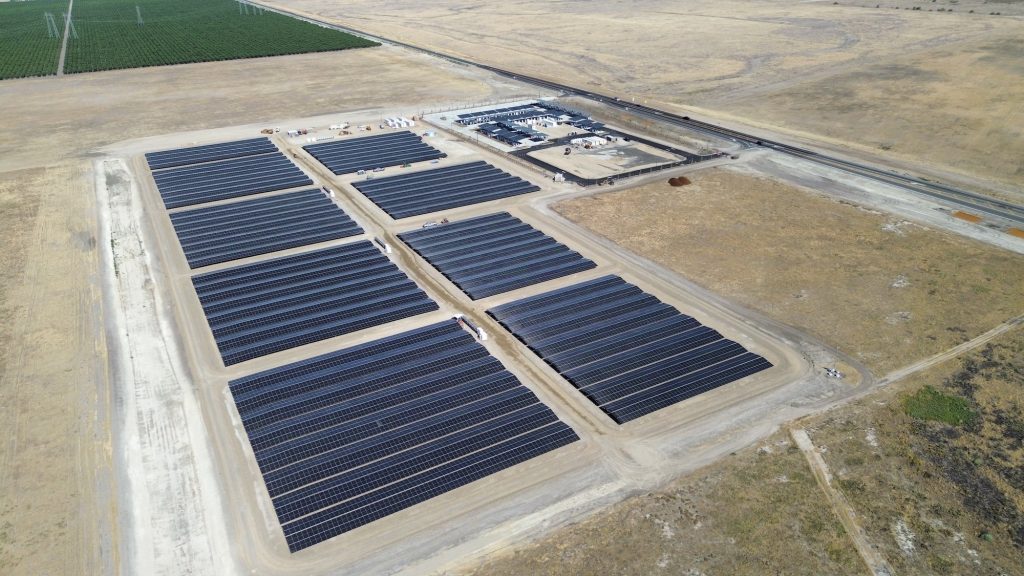
Credit: Tesla Charging | X
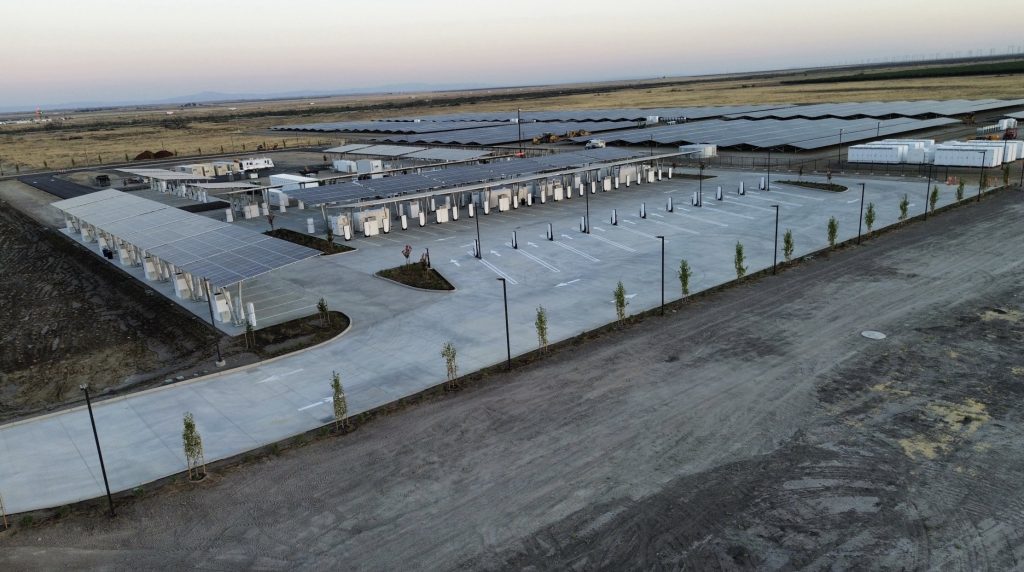
Credit: Tesla Charging | X
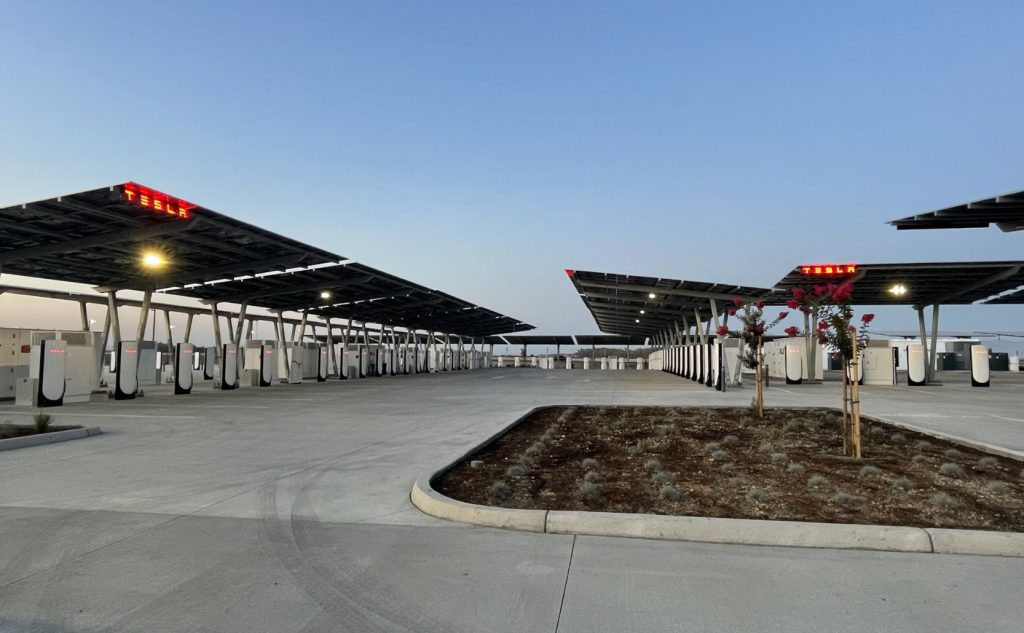
Credit: Tesla Charging | X
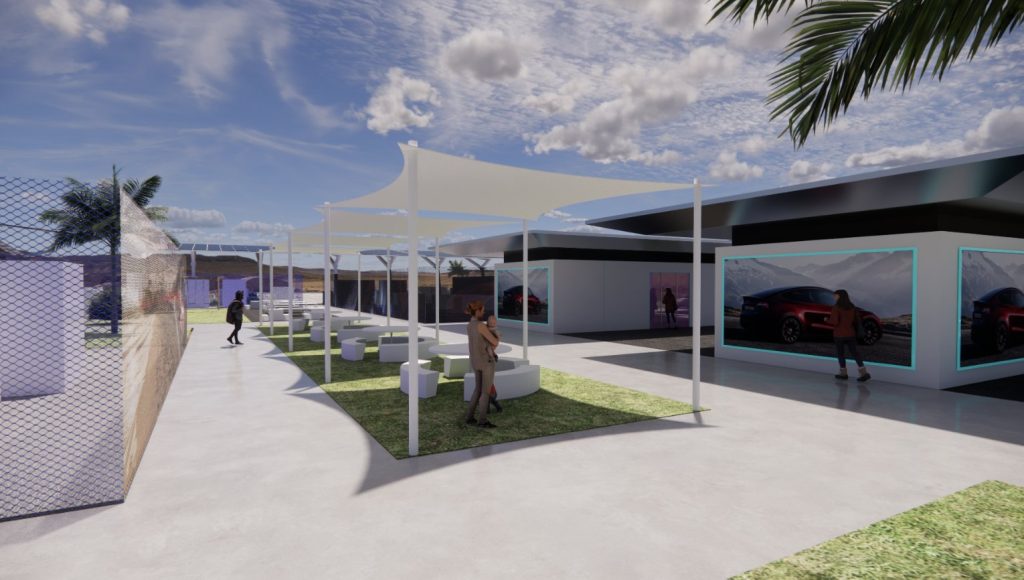
Credit: Tesla Charging | X
Tesla Supercharger Maps for North America, Europe, and Asia pic.twitter.com/0U5r0XRPyo
— TESLARATI (@Teslarati) July 2, 2025
READ MORE ON TESLA SUPERCHARGERS: Tesla launches ultra-fast V4 Superchargers in China for the first time
Testing at the LA Diner, plus Musk update on potential Tesla solar Gigafactory
The huge Tesla Supercharger station completed phase one of construction fairly quickly, especially given how long Tesla has been working on its unique Los Angeles diner, drive-in, and Supercharger location. Still, the company was seen performing some testing at the nearly-completed charging station earlier this month, and will reportedly be holding a job fair.
Elon Musk also responded on Monday morning to a post on X, suggesting that Tesla is “thinking about” building a U.S.-based solar Gigafactory in order to help support increased power needs with AI growth, and to bolster domestic solar production.
Tesla is building a new UFO-inspired Supercharger in the heart of Alien country
News
Tesla driver walks away from major accident with minor injuries
The driver sustained only minor injuries, and the exact cause of the crash remains under investigation.
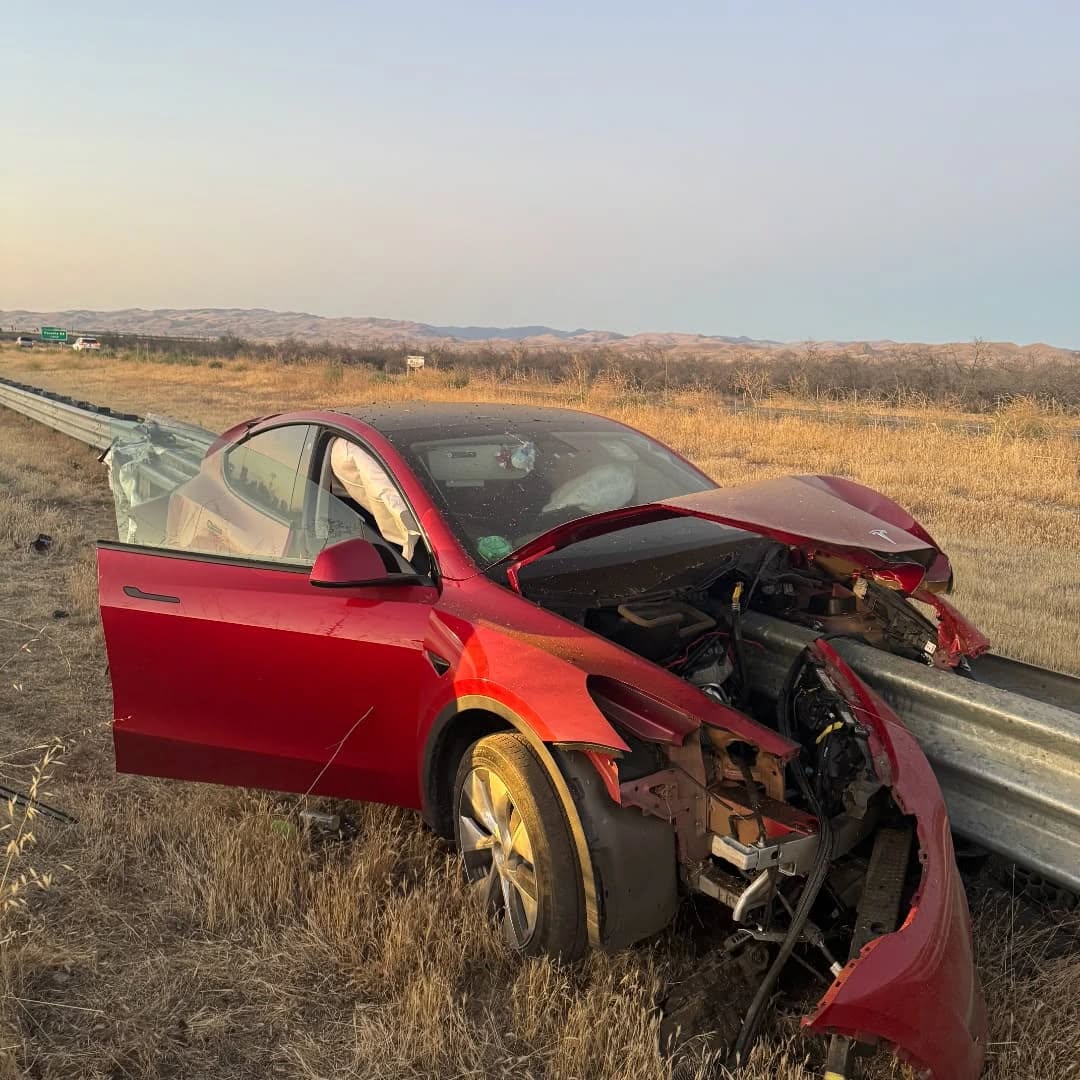
The driver of a Tesla Model Y survived and walked away from a harrowing accident on Monday in California, only sustaining minor injuries despite the vehicle being impaled by a guardrail.
On Monday morning around 4:34 a.m., the Los Banos division of the California Highway Patrol (CHP) responded to the accident on I-5 near Panoche Road, involving a 23-year-old in a Tesla Model Y. According to a post on social media, the driver veered off the road for unknown reasons in the northbound lane, before crashing directly into the guardrail and impaling the vehicle.
You can read the full message and photos from Los Banos CHP below, as were shared in a Facebook post on Monday afternoon.
This morning a Tesla model y was traveling in the #1 northbound lane of I-5 north of Panoche Rd. For unknown reasons driver allowed V-1 to veer off the roadway, travel through a dirt center divide, and crashed into the fixed metal guardrail. Lucky for the driver he only sustained minor injuries and was able to walk away. Driving a vehicle requires 100% attention to the road. Avoid distractions and focus on driving.
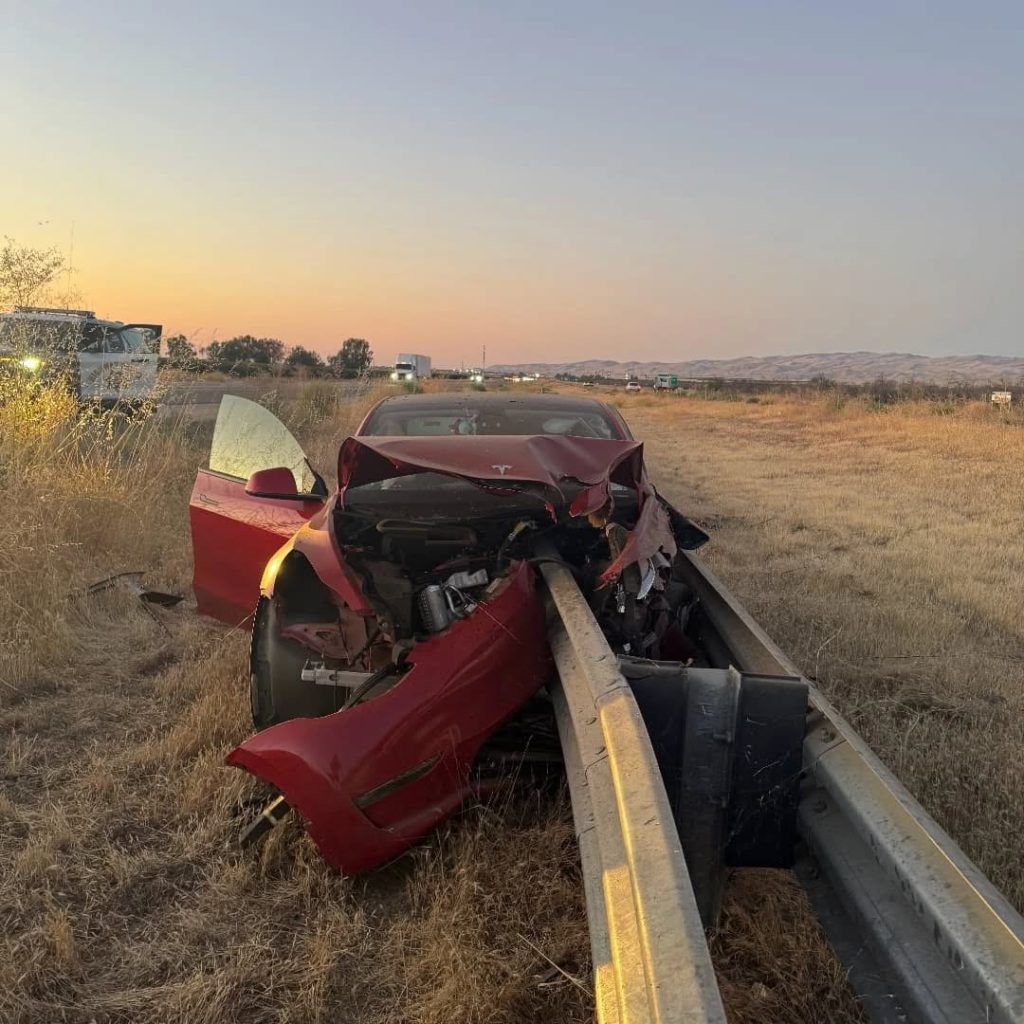
Credit: CHP Los Banos (via Facebook)
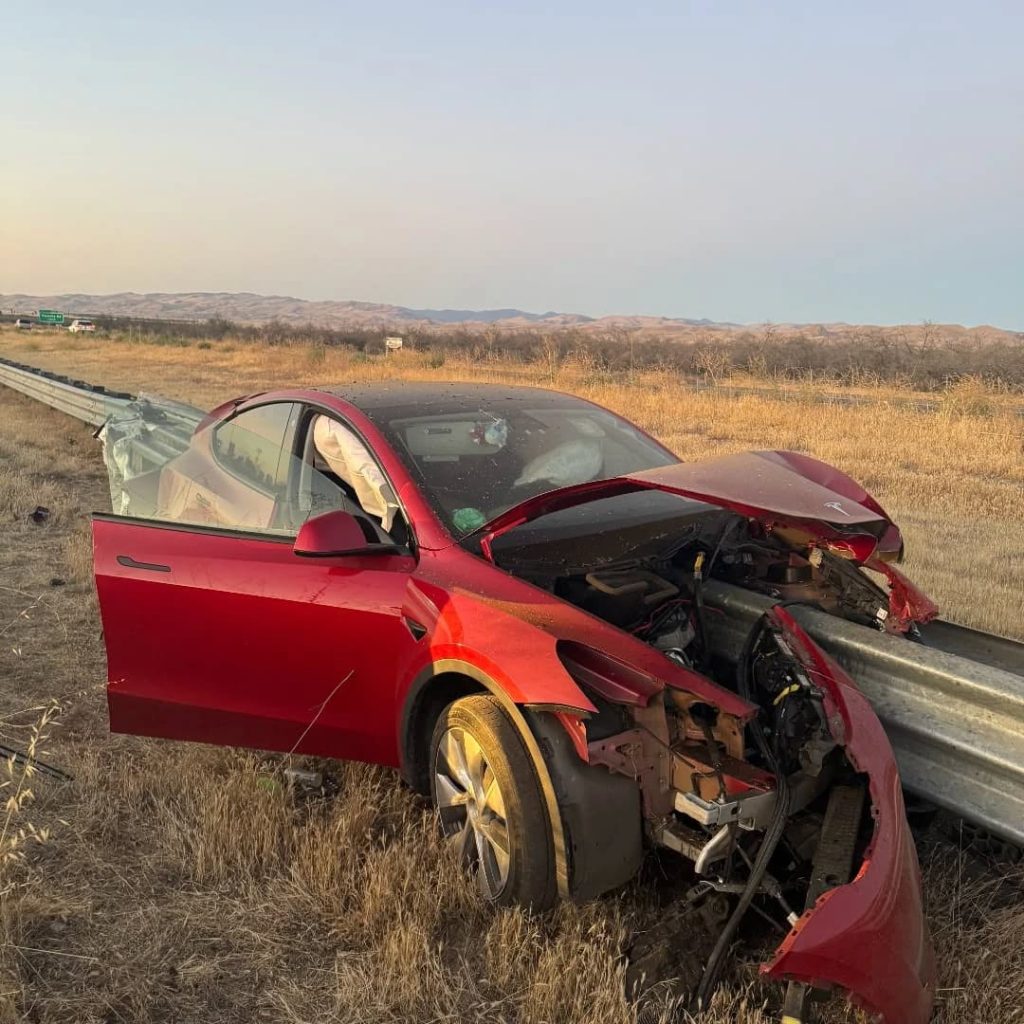
Credit: CHP Los Banos (via Facebook)
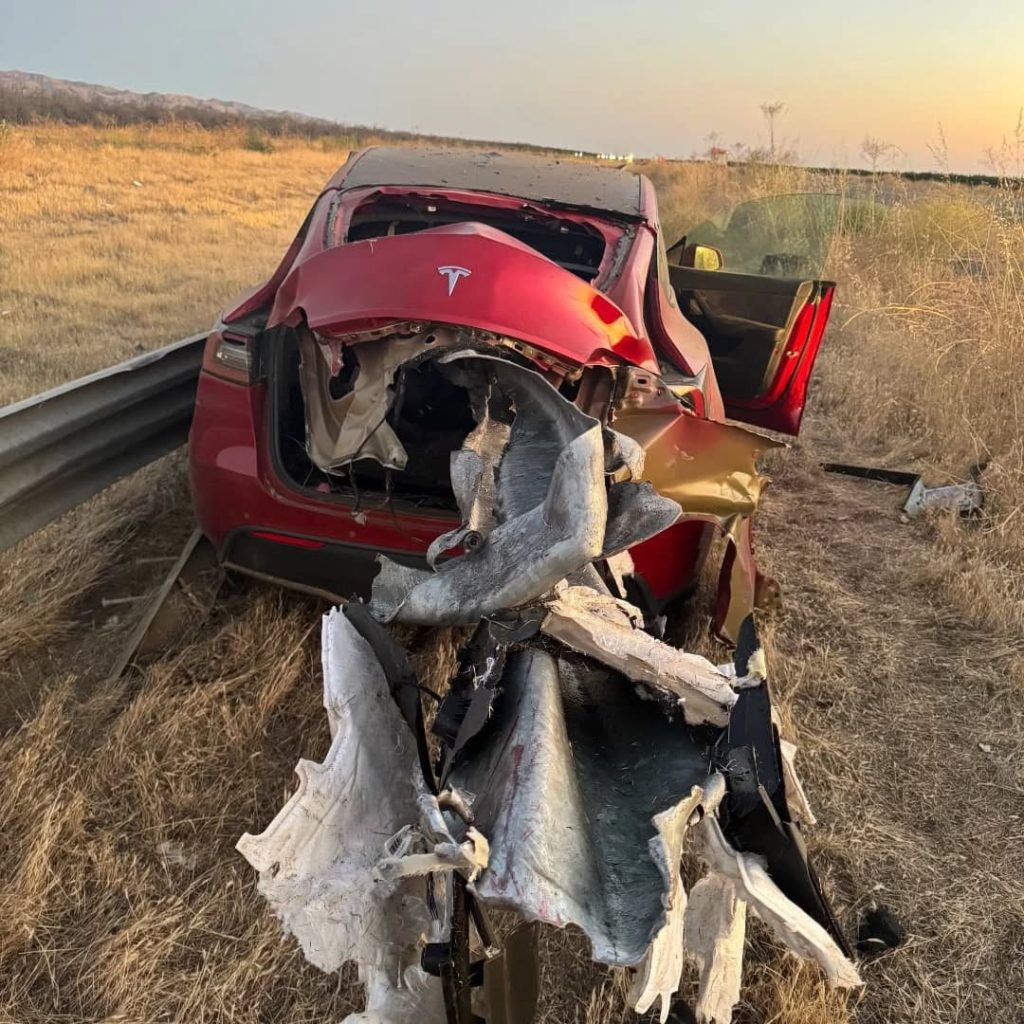
Credit: CHP Los Banos (via Facebook)
In a statement to SFGate, CHP officer Myles Anderson said that the driver only sustained minor injuries, while no arrests are made and drugs and alcohol are not suspected to have been involved. The report also notes that Tesla’s “cruise control and lane assistance features” were activated, according to Anderson. However, it’s not entirely clear if this is referring to Supervised Full Self-Driving (FSD), or to the cruise control and lane assist features baked into Autopilot.
At the time of writing, CHP has not yet responded to Teslarati’s request for clarification and additional details on the matter.
Tesla Crash Safety Ratings across its lineup: pic.twitter.com/ny30R7ceji
— TESLARATI (@Teslarati) July 1, 2025
READ MORE ON TESLA SAFETY: Tesla rolls out crucial new safety feature aimed at saving children
The news comes after Tesla has touted its vehicles as incredibly safe for many years. In December, for example, the company highlighted receiving top safety scores from regulators on four different continents throughout the world, including from the National Highway Traffic Safety Administration (NHTSA) and the Insurance Institute of Highway Safety (IIHS) in the U.S.
Tesla has also listed the goal of making its vehicles the safest on the road throughout the years, both in the overall design of its vehicles and in its Autopilot and Full Self-Driving (FSD) programs.
Tesla Model 3 ranks as the safest new car in Europe for 2025, per Euro NCAP tests
Investor's Corner
Cantor Fitzgerald maintains Tesla (TSLA) ‘Overweight’ rating amid Q2 2025 deliveries
Cantor Fitzgerald is holding firm on its bullish stance for the electric vehicle maker.
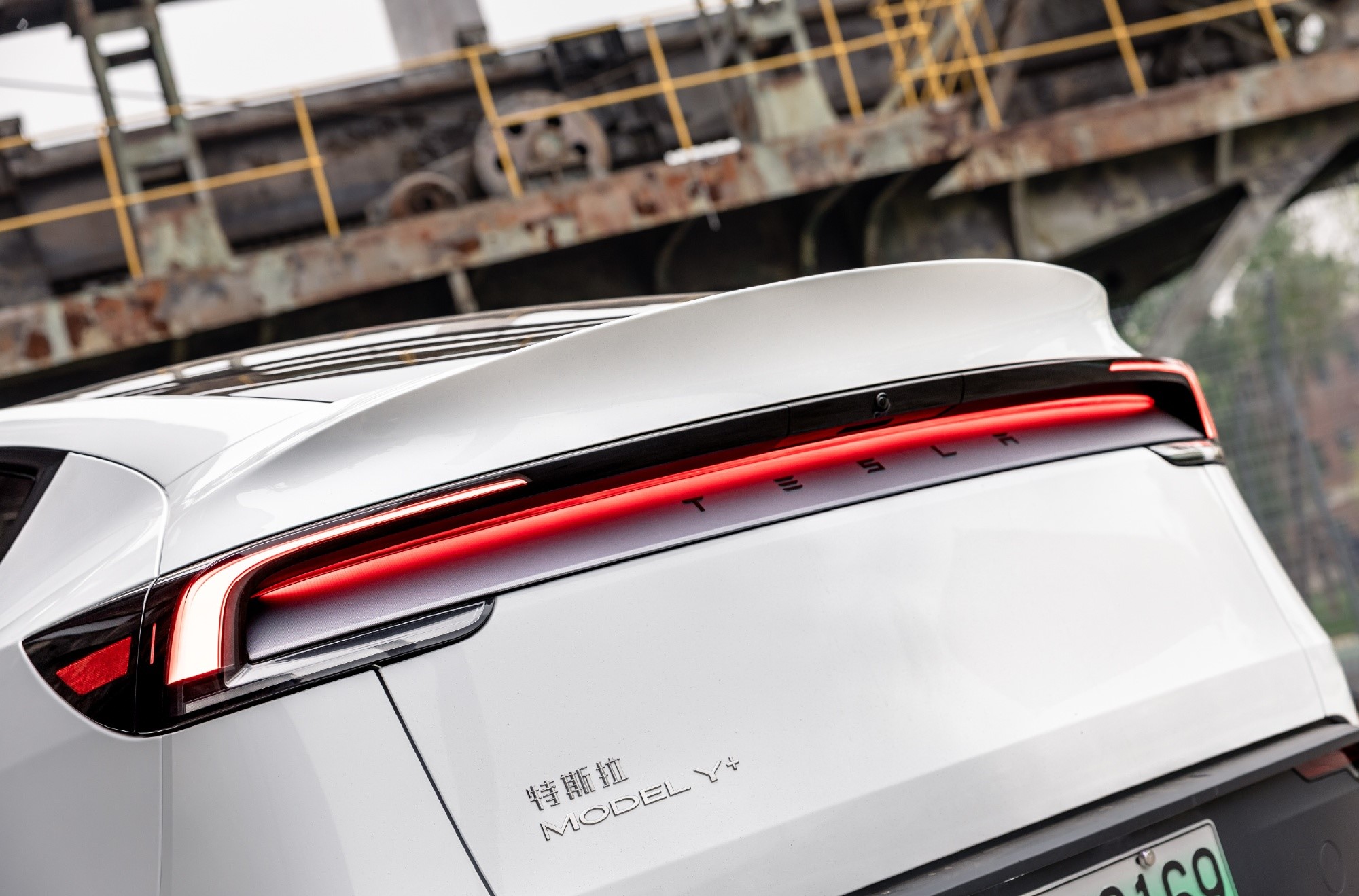
Cantor Fitzgerald is holding firm on its bullish stance for Tesla (NASDAQ: TSLA), reiterating its “Overweight” rating and $355 price target amidst the company’s release of its Q2 2025 vehicle delivery and production report.
Tesla delivered 384,122 vehicles in Q2 2025, falling below last year’s Q2 figure of 443,956 units. Despite softer demand in some countries in Europe and ongoing controversies surrounding CEO Elon Musk, the firm maintained its view that Tesla is a long-term growth story in the EV sector.
Tesla’s Q2 results
Among the 384,122 vehicles that Tesla delivered in the second quarter, 373,728 were Model 3 and Model Y. The remaining 10,394 units were attributed to the Model S, Model X, and Cybertruck. Production was largely flat year-over-year at 410,244 units.
In the energy division, Tesla deployed 9.6 GWh of energy storage in Q2, which was above last year’s 9.4 GWh. Overall, Tesla continues to hold a strong position with $95.7 billion in trailing twelve-month revenue and a 17.7% gross margin, as noted in a report from Investing.com.
Tesla’s stock is still volatile
Tesla’s market cap fell to $941 billion on Monday amid volatility that was likely caused in no small part by CEO Elon Musk’s political posts on X over the weekend. Musk has announced that he is forming the America Party to serve as a third option for voters in the United States, a decision that has earned the ire of U.S. President Donald Trump.
Despite Musk’s controversial nature, some analysts remain bullish on TSLA stock. Apart from Cantor Fitzgerald, Canaccord Genuity also reiterated its “Buy” rating on Tesla shares, with the firm highlighting the company’s positive Q2 vehicle deliveries, which exceeded its expectations by 24,000 units. Cannacord also noted that Tesla remains strong in several markets despite its year-over-year decline in deliveries.
-

 Elon Musk1 week ago
Elon Musk1 week agoTesla investors will be shocked by Jim Cramer’s latest assessment
-

 News2 weeks ago
News2 weeks agoTesla Robotaxi’s biggest challenge seems to be this one thing
-

 News2 weeks ago
News2 weeks agoWatch the first true Tesla Robotaxi intervention by safety monitor
-

 Elon Musk1 week ago
Elon Musk1 week agoA Tesla just delivered itself to a customer autonomously, Elon Musk confirms
-

 News2 weeks ago
News2 weeks agoTesla Robotaxi rollout proves that Elon Musk still delivers, even if it’s late
-

 Elon Musk2 weeks ago
Elon Musk2 weeks agoxAI welcomes Memphis pollution results, environmental groups push back
-
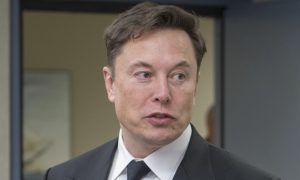
 Elon Musk2 weeks ago
Elon Musk2 weeks agoElon Musk commends Tesla team on successful Robotaxi launch
-

 Elon Musk2 weeks ago
Elon Musk2 weeks agoElon Musk confirms Tesla Optimus V3 already uses Grok voice AI




